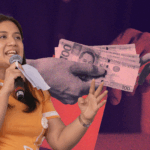The rising trend of overspending on ‘anik-aniks’ is becoming a growing concern for many Filipinos as it is slowly becoming a root of consumerism and enslaved by capitalism.
Social media influencers and online platforms are fueling anik-anik culture, encouraging consumers to indulge in frequent buying of items to ‘heal their inner child.’
Despite these purchases looking harmless, the financial strain is becoming evident, particularly as inflation continues to impact the cost of living.
Why is buying anik-anik popular today?
Anik-anik can be traced back to its Western context, specifically during the Spanish colonial period in the Philippines, including the concept of space which meant ‘fostering closeness’, ‘evidence of wealth’, or detonating an explosion of forms and colors.
After colonization, the Filipinos bore fruit to the ‘fear of empty spaces,’ turning rooms into galleries of sentimentality, social status, and self-expression.
According to World Scientific Publishing, Asian cultures are known to save more and live by the statement ‘just in case,’ believing that anik-aniks and abubots do not need to contribute to consumerism but rather unveil underlying narratives.
“The class-specific experience that’s associated or attached to the term [anik-anik], in a way, is validation for how they live their lives, how they thrive in spite of a lot of things,” Ateneo de Manila University Fine Arts Department Instructor Allan Pastrana shares.
Healing Inner Children
According to Medium, anik-anik is a Filipino alternative slang for ‘kung ano-ano,’ which means anything and everything.
Initially, it refers to trivial items that are often refused to discard and kept due to personal or practical reasons, including bus tickets, napkins from fast-food restaurants, keychains as place souvenirs, and refrigerator magnets.
In a Filipino cultural context, anik-anik are ‘humble mementos.’ However, due to social media influence, the term evolved into a set of aesthetically pleasing material objects bought from shops.
Psychologist Ryan Portuguez said, “We all process our past experiences in different ways. For some people, buying what they were deprived of as kids now that they have the means to do so is considered healing. For others, it might just be getting to try something that you never had the opportunity to.”
Purchases like Sonny Angels, Smiskis, and PopMart collectibles were labeled as something ‘worthy of buying’ to ‘heal something from within,’ which is the desire for satisfaction.
Consumerism Slaves?
Contrary to paper scraps and inexpensive figurines found in the streets, most collectibles now that are considered anik-anik cost up to at least PHP600 per purchased item.
“A consumerist lifestyle is a self-defeating endeavor because the fulfillment derived from it is misdirected…The existential vacuum left by modernity ‘s woes drives people to a frenetic search for fulfillment,” said Lani Mae Junio, a teacher in Philosophy.
In March 2024, Style Analytics found that Pinterest searches for bag charms increased 263% compared to last year when people started to get introduced to the anik-anik fashion trend.
However, other Filipinos already consider buying a collectible as a form of ‘expensive lifestyle,’ which only ‘high-end’ people can afford such as celebrities and personalities.
The Labubu, a character from the Monster Series, became a ‘must’ and ‘staple’ for Filipino stars, including Heart Evangelista, Marian Rivera, and Ruffa Gutierrez.
The unseen value of anik-anik objects
Magnum tweeted an original poster citing that keeping a Magnum ice cream wrapper was already a luxury for them in 2013, giving a sense of sentimental value to the time they first tasted the ice cream that was coined ‘too expensive’ for that time.
In the article of Ricardo Pamintuan, it was stated that most Filipino homes are considered cluttered because of too much anik-anik, which reflects a portion of the culture of being resourceful or nothing goes to waste.
Despite social classes shaping consumer attitudes and purchasing power on how people define anik-anik, different classes may feel similar sentiments for different items, where collecting scraps and collecting toys or figurines both share sentimental value.
According to Professor Luis Abesamis, anik-anik is a reflection of value to people, where some items may be used in the future or hold a sentimental value or ‘keepsake.’
Filipinos having a naturally maximalist aesthetic
A 2011 article by Felipe De Leon stated that Filipinos are maximalists by nature, having tendencies to ‘fill up every available space with forms and things,’ due to the strong desire to connect and find a sense of belongingness.
According to De Leon, apart from anik-anik filling up white spaces for decoration, it also fills a void or gap in the existence of Filipinos for craving nostalgic moments while building bonds with others through colorful and sentimental figures.
Aside from being maximalists, Filipinos also love nostalgia, where the essence of anik-anik traces back the trends to 90s pop culture that started the emergence of the Y2K style of the country. One of the most famous personalities to have this aesthetic is Jolina Magdangal, who popularized colorful hair accessories and preppy outfits, serving as some of the foundations of the current anik-anik fashion.








